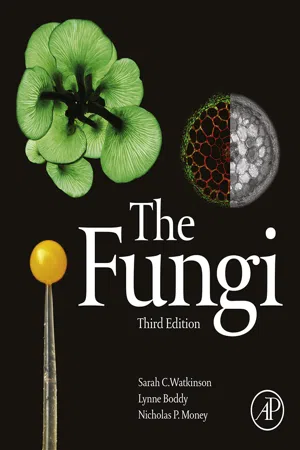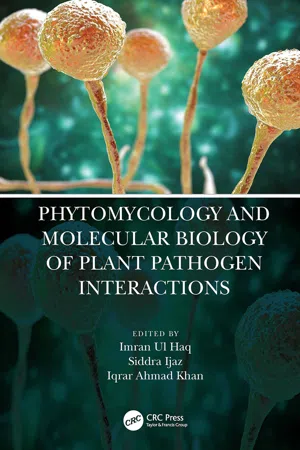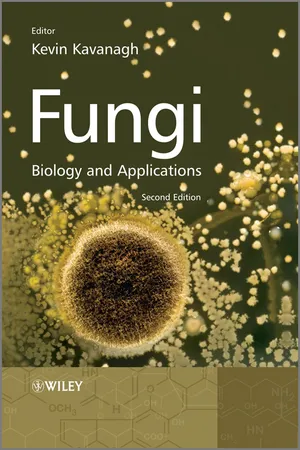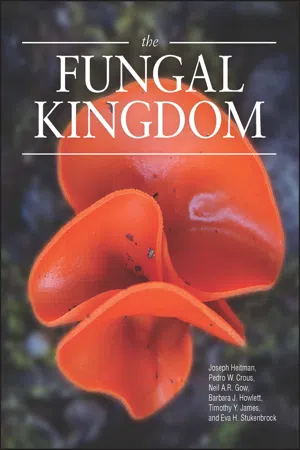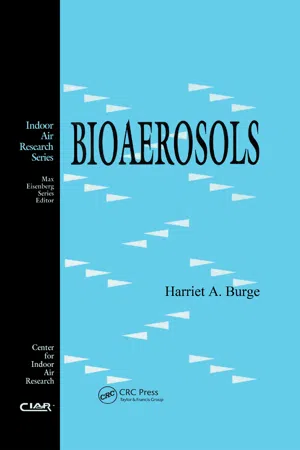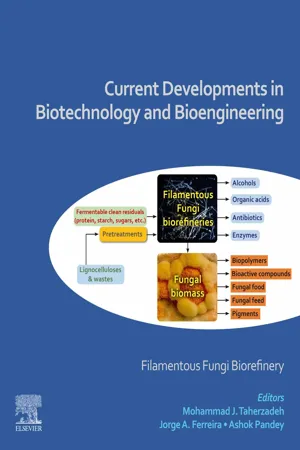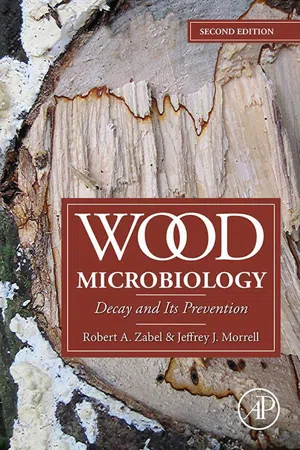Biological Sciences
Fungi Cell
Fungi cells are eukaryotic cells that make up the structure of fungi organisms. They contain membrane-bound organelles, including a nucleus, mitochondria, and endoplasmic reticulum. Fungi cells also have a cell wall made of chitin, which provides structural support and protection. These cells play a crucial role in the life cycle and functions of fungi, including reproduction and nutrient absorption.
Written by Perlego with AI-assistance
9 Key excerpts on "Fungi Cell"
- eBook - ePub
- Sarah C. Watkinson, Lynne Boddy, Nicholas Money(Authors)
- 2015(Publication Date)
- Academic Press(Publisher)
Chapter 2Fungal Cell Biology and Development
Nicholas P. Money Miami University, Oxford, OH, USAAbstract
Fungi share most fundamental features of cell structure and function with other eukaryotes. Cell biological distinctions include the unique chemical composition of the fungal cell wall and plasma membrane, and the peculiar mechanisms of hyphal growth in filamentous fungi and budding in yeasts. Filamentous fungi generate multicellular colonies, or mycelia, through the extension and repeated branching of cells called hyphae. Mycelia can be restricted to a patch on a decomposing leaf, or span an enormous territory in a forest ecosystem. Fungi also produce multicellular organs that function in the exploration of the environment and survival under conditions of environmental stress. Fruit bodies, including the familiar mushrooms of basidiomycetes, are multicellular reproductive organs. Mushroom formation involves the coordinated growth of millions of hyphae. The molecular control of hyphal growth and fruit body formation are areas of active research, but many questions about the developmental biology of the fungi are unanswered.Keywords Basidiomata Chitin Dolipore septum Ergosterol Hyphal tip growth Turgor pressure Rhizomorphs Septation Woronin bodies Yeast cell cycleOrganelles, Cells, Organs
Fungi are eukaryotes and much of their cell biology is shared with animals, plants, and protists. Fungal cells are built from the same kinds of organelles as other eukaryotes. They have a plasma membrane, nuclei, and complicated endomembrane system. Most species have mitochondria. A few organelles are not found in other kingdoms. These include a dense assembly of secretory vesicles called the Spitzenkörper that is located in hyphal tips, and the Woronin body of Ascomycota that serves as an intracellular plugging device that stops cytoplasmic leakage. The chitinous cell wall is another distinctive feature of fungal cells. This chapter will provide an overview of the structure of fungal cells, discuss how they grow and multiply to form yeast colonies or branching mycelia, and describe the developmental processes that result in the formation of complex, multicellular organs including cords, sclerotia, and mushrooms (Figure 2.1 - Imran Ul Haq, Siddra Ijaz, Iqrar Ahmad Khan(Authors)
- 2022(Publication Date)
- CRC Press(Publisher)
2 An Insight Into Fungal Biology Imran Ul Haq, Nabeeha Aslam Khan and Muhammad Kaleem SarwarDOI: 10.1201/9781003162742-2CONTENTS
- Introduction to Fungi
- Physiology and Biochemical Genetics
- Nutritional Requirement, Uptake, Assimilation, and Growth
- Spore Germination and Penetration
- Biotrophic Phase
- Necrotrophic Phase
- Sporulation
- Fungal Metabolism
- Nitrogen Metabolism
- Carbon Catabolism
- Cell Wall Formation
- Composition
- Reproduction
- Vegetative Mode of Reproduction
- Fragmentation
- Budding
- Fission
- Rhizornorphs
- Oidia
- Sclerotia
- Chlamydospores
- Asexual Reproduction
- Sporangiospores
- Conidiospores
- Zoospores
- Sexual Reproduction
- Plasmogamy
- Karyogamy
- Meiosis
- Planogametic Copulation
- Gametangial Contact
- Gametangial Copulation
- Somatogamy
- Specialization
- Morphogenesis
- Chitosan
- Pathogenesis
- Host Specificity
- Defense Systems
- Regulation of Pathogenesis
- Invasion of Pathogen
- Colonization and Alteration of Host Physiology
- Reproduction
- Sexual Reproduction and Mating Systems
- Mating Systems
- Homothallism and Heterothallism
- Response to Stress and Sensing
- Quorum Sensing
- References
Introduction to Fungi
Fungi are the second largest group of living organisms, with 51,000 genera and more than 70,000 known species (Blackwell, 2011 ; Hawksworth, D.L., 2012 ). Fungi are eukaryotic, multicellular heterotrophs. Fungi are organisms with chitin in their cell walls as the main structural component. The other components of their cell wall are mainly glucan, mannan, and chitosan. About 22–44% of the fungal cell wall is chitin as distinguished from the cell wall of plants (Khale and Deshpande, 1992 ; Muzzarelli et al., 1994 ; Kirk et al., 2008 ), and fungi exhibit the absorptive mode of nutrition (as distinguished from animals). The body of fungi is filamentous, called “mycelium.” The mycelium is composed of tubular cells known as “hyphae” (aseptate or septate). The body of the fungus is called “thallus.” Some fungi are biotrophs (obtain nutrition from living cells), some are saprotrophs (get nutrition from the dead host), and some are necrotrophs (attack and kill the host, then obtain nutrients). They are parasites, decomposers, and also exhibit symbiosis. The true fungi are divided into four main phyla: Basidiomycota, Ascomycota, Zygomycota, and Chytridiomycota (Alexopoulos et al., 1996 ; Webster and Weber, 2007- eBook - ePub
Fungi
Biology and Applications
- Kevin Kavanagh(Author)
- 2011(Publication Date)
- Wiley(Publisher)
In addition to the direct industrial exploitation of yeasts and fungi, it is important to note that these organisms, most notably the yeast Saccharomyces cerevisiae, play increasingly significant roles as model eukaryotic cells in furthering our fundamental knowledge of biological and biomedical science. This is especially the case now that numerous fungal genomes have been completely sequenced, and the information gleaned from fungal genomics and proteomics is providing valuable insight into human genetics and heritable disorders. However, knowledge of cell physiology is essential if the functions of many of the currently unknown fungal genes are to be fully elucidated. It is apparent, therefore, that fungi are important organisms for human society, health and well-being and that studies of fungal physiology are very pertinent to our understanding, control and exploitation of this group of microorganisms. This chapter describes some basic aspects of fungal cell physiology, focusing primarily on nutrition, growth and metabolism in unicellular yeasts and filamentous fungi. 1.2 Morphology of Yeasts and Fungi Most fungi are filamentous, many grow as unicellular yeasts and some primitive fungi, such as the chytridomycetes, grow as individual rounded cells or dichotomous branched chains of cells with root-like rhizoids for attachment to a nutrient resource. Here, we will consider the most common growth forms: the filamentous fungi and unicellular yeasts. 1.2.1 Filamentous Fungi The gross morphologies of macrofungi and microfungi are very diverse (see Plate 1.1). For example, we can easily recognize a variety of mushrooms and toadstools, the sexual fruiting bodies of certain macrofungi (the higher fungi Asomycotina and Basidiomycotina and related forms), during a walk through pasture or woodland - eBook - ePub
- Joseph Heitman, Barbara J. Howlett, Pedro W. Crous, Eva H. Stukenbrock, Timothy Yong James, Neil A. R. Gow(Authors)
- 2017(Publication Date)
- ASM Press(Publisher)
12 The Fungal Cell Wall: Structure, Biosynthesis, and FunctionNeil A. R. Gow,1 Jean-Paul Latge,2 and Carol A. Munro1INTRODUCTION
Fungal cell walls are dynamic structures that are essential for cell viability, morphogenesis, and pathogenesis. The wall is much more than the outer layer of the fungus; it is also a dynamic organelle whose composition greatly influences the ecology of the fungus and whose composition is highly regulated in response to environmental conditions and imposed stresses. A measure of the importance of the cell wall can be appreciated by the fact that approximately one-fifth of the yeast genome is devoted to the biosynthesis of the cell wall (1 , 2 ). Of these approximately 1,200 Saccharomyces cerevisiae genes (2 ), some are concerned with the assembly of the basic components, others provide substrates for wall materials, and many regulate the assembly process and couple this to environmental challenges. They include genes that encode carbohydrate active enzymes (which can be found in the CAZy database [http://www.cazy.org ]) (3 ) and include multigene families of chitin and glucan synthases as well as remodeling enzymes such as the glycohydrolases (glucanases, chitinases) and transglycosidases. Many of the building blocks of the cell wall are conserved in different fungal species (4 ), while other components of the wall are species-specific, and there is perhaps no part of the cell that exhibits more phenotypic diversity and plasticity than the cell wall.Walls are built to be both malleable and mechanically robust. The high total solute concentration inside fungal cells results in the osmotic uptake of water and the pressing of the cell membrane onto the wall. The resulting turgor pressure has been estimated to be between 0.2 and 10 MPa—equivalent to 2 to 20 times atmospheric pressure (5 ). The melanized cell walls of the appressoria of some plant pathogens such as Magnaporthe oryzae can withhold an internal turgor of up to 20 MPa. These cell walls are the most robust of all walls found in nature. Turgor pressure generates the force that enables hyphae to exert mechanical force on the substrates they are penetrating (5 , 6 ). Hyphal forces of between 0.01 and 0.1 μN/μm (5 - eBook - ePub
- Patricia Barnes-Svarney, Thomas E. Svarney(Authors)
- 2014(Publication Date)
- Visible Ink Press(Publisher)
Unlike plant cell walls, a fungus’s cell wall is composed of chitin—called a polysaccha-ride or nitrogenous substance—and one that is most often found in the outer skeleton (exoskeleton) of certain land animals, such as grasshoppers, and outer shells of some marine animals, such as crabs and mollusks. (To compare, the cell walls of plants and some protists are composed of cellulose.) The rigidity of the chitin is for protection and also helps to slow down dehydration of the fungi, especially in times of drought.What structures, or organelles, are found in a typical fungus?
A typical fungus has a nucleus—sometimes more than one per cell—that holds its genetic material (chromosomes). Other organelles that help a fungus cell to function include the cytoplasm (for movement of materials through the hydrae), mitochondria (converts energy), rough and smooth endoplasmic reticulum (makes the more complex proteins), and Golgi apparatus (forms many types of proteins and enzymes). Fungi also have, like bacteria, ribosomes, but those in bacteria are smaller and have a different way of reproducing.What organelle is absent in fungi?
Centrioles that divide during cell division processes, mitosis and meiosis, are lacking in all fungi. (They are found only in animal cells and are self-replicating organelles that appear to help organize cell division, but aren’t essential to the process; for more about mitosis and meiosis, see the chapter “Cellular Basics .”)What main carbohydrate is stored by fungi?
The main carbohydrate stored by fungi is glycogen—also the main storage carbohydrate of animals. This fact suggests that fungi are more closely related to animals than plants, which store starch as their main carbohydrate.How do fungi obtain food?
Fungi are heterotropic—they cannot photosynthesize. In general, instead of taking food inside its body and then digesting it as an animal would, most fungi digest food outside their bodies by secreting special strong enzymes onto the food. In this way, complex organic compounds are broken down into simpler compounds that a fungus can absorb (which means fungi are osmotrophic) through their cell walls and cell membranes. In addition, fungi do not swim, walk, or run to get their nutritional needs—but move to the food by growing toward it. - eBook - ePub
- Harriet A. Burge(Author)
- 2020(Publication Date)
- CRC Press(Publisher)
Fungi are eukaryotic organisms that belong to a kingdom distinct from plants and animals. Fungi include inconspicuous yeasts, molds, and mildews, as well as large mushrooms, puffballs, and bracket fungi. Structurally, fungi exist as single cells such as yeast or, far more commonly, as threadlike hyphae. Hyphae usually branch extensively, and the collective mass of interwoven hyphal filaments is referred to as a mycelium. Depending on the species, each hypha may have many short cells, or it may be nonseptate with multiple nuclei existing in a common cytoplasm. While individual hyphae are microscopic, the mycelium is often visible to the naked eye. Highly specialized reproductive structures such as mushrooms and brackets are actually compact masses of tightly interwoven hyphae and are the visible portion of an extensive mycelium within the substrate.One feature the fungi share with plants is the presence of cell walls. The fungal wall, consisting of fibrils embedded in a matrix, is largely composed of polysaccharides (often over 90%) but also contains significant amounts of protein and lipid (Deacon, 1984; Ruiz-Herrera, 1991). In most fungi, the major fibrillar component of the cell wall is chitin (a straight-chain β-1,4-polymer of N-acetyl glucosamine); however, some fungi possess cellulose fibrils. The matrix, on the other hand, contains a variety of carbohydrates and proteins. Although chitin is considered the characteristic wall material, in many fungi the matrix polysaccharides are far more abundant. The most thoroughly studied wall polysaccharides are the β-glucans (glucose polymers). The β-1,3-glucans with some β-1,6-branching can be considered the most important, with many different compounds included in this category. Some β-glucans form part of the amorphous matrix while others are part of the fibrillar wall structure (Ruiz-Herrera, 1991). In addition to its obvious structural and osmotic functions, the wall serves as a binding site for some extracellular enzymes and has antigenic properties as well (Deacon, 1984).Fungi normally reproduce through the formation of spores that may result from sexual or asexual processes. Many fungi undergo both asexual and sexual reproduction at different stages in their life cycle. The sexual phase of the life cycle is known as the teleomorphic (or perfect) state or stage, while the asexual phase is called the anamorphic (or imperfect) stage. Sexual spores are the result of genetic recombination and normally follow karyogamy (fusion of nuclei) and meiosis. These processes occur in specialized cells, and in some groups the sexual spores form in specialized fruiting bodies. Asexual spores result from mitosis and may also be characteristic of certain groups. Asexual spores may form enclosed within a sporangium (sporangiospores) or be produced directly by the hyphae without any enclosing wall (conidia). - eBook - ePub
Current Developments in Biotechnology and Bioengineering
Filamentous Fungi Biorefinery
- Mohammad Taherzadeh, Jorge Ferreira, Ashok Pandey(Authors)
- 2022(Publication Date)
- Elsevier(Publisher)
3: Fungal biology
Soumya Mukherjeea ; Shakuntala Ghoraiba University of Toledo, Toledo, OH, United Statesb Department of Microbiology, Raidighi College, Raidighi, IndiaAbstract
Fungal biology is a congregated tale of emergence of fungal phylogeny in the tree of life. With flagellated ancestors tracing back to the Devonian period followed by their evolutionary changes and development in their topology and cellular chemistry as they adapted from primitive aquatic beings to today's terrestrial life, taxonomic diversity of fungi has baffled taxonomists and mycologists. Traditional classical taxonomy faced great challenges and had a chaotic and ambivalent taxonomical history. With time, major innovations in technology and molecular methods have revolutionized our understanding concerning the extent of fungal diversity and resulted in major changes and realignment of new clades in the phylogenetic tree.Keywords
Tree of life; Taxonomy; Molecular methods; PhylogenyAcknowledgments
Dr. Shakuntala Ghorai is thankful to Dr. Sasabindu Jana, Principal, Raidighi College, for his constant encouragement and support in all academic endeavors.1: Introduction
Kingdom fungi constitute an exceedingly species-rich kingdom, covering almost 100,000 described and about 1.5–5.1 million undescribed species in diverse environments such as forest soil, phyllosphere, aquatic ecosystems, and soils of the pristine polar region (Jumpponen and Jones, 2009 ; Kagami et al., 2007 ; Durán et al., 2019 ). Fungi are important components of ecosystems. They play roles of decomposers, mutualists of plants and as parasites to various organisms (Talbot et al., 2008 ; Allen et al., 2003 ; Kohler et al., 2015 ). Humans utilized fungi in terms of applications in agriculture, pharmacology, the food industry, and environmental technologies (Rico-Munoz et al., 2019 ; Zjawiony, 2004 ; Cardoso and Kuyper, 2006 ; Wang and Chen, 2006 ). Thus, exploration of fungal diversity is worthy of effort and time not only for our ecosystem and ecological community but also to provide invaluable resources for various fields of applied microbiology (Table 1 - eBook - ePub
Wood Microbiology
Decay and Its Prevention
- Robert A. Zabel, Jeffrey J. Morrell(Authors)
- 2020(Publication Date)
- Academic Press(Publisher)
Hyphal walls also serve as important storage reserves for some fungi. Structurally, fungal cell walls consist of an inner network of microfibrils embedded in an amorphous matrix that also forms the outer layers or often lamellae of the wall. Chemically, the walls consist of 80–90% polysaccharides with the remainder composed of proteins and lipids. Chitin, glucans, and in a few cases primarily in the higher fungi, chitosan forms the microfibrils that serve as the skeletal framework of the walls. Chitin is the principal skeletal material and is present in the inner walls of most septate fungi. The chitinous nature of the cell wall is one of the fundamental differences separating most fungi from plants, although some fungi have other polymers in their cell walls (Gow et al., 2016). The roles of the proteins and lipids in the walls vary. Some may be cell-wall bound enzymes while others may function in structural integrity while still others may be important in recognition phenomena. Fungal cell walls are surprisingly complex, both chemically and structurally. Photomicrographs of the various cell wall layers, after successive enzymatic treatments, were assembled by Becket et al. (1974) for the representatives of the major fungal groups. Bartnicki-Garcia (1968) suggested that differences in chemical composition of the cell wall were closely related to taxonomic position. The fungal cell wall is now viewed as a far more complex organelle that serves to protect the fungus, but also functions in surface recognition (Gow et al., 2016). The wall foundation consists of fibrous and gel-like carbohydrate polymers that act as a scaffold for proteins and other components. The cell wall is layered with the outer layer containing the greatest variety of components. Structural formulas for some common cell-wall constituents are presented in Fig. 3.4. Figure 3.4 Chemical structures of portions of repeating units of several common polysaccharides found in fungal cell walls - J. Richard Dickinson, Michael Schweizer(Authors)
- 2004(Publication Date)
- CRC Press(Publisher)
Chapter 5 Molecular organization and biogenesis of the cell wall Frans M. Klis, Piet de Groot, Stanley Brul and Klaas Hellingwerf 5.1 Introduction The cell wall of yeasts accounts for about 25–30% of the cell dry weight and thus represents a considerable investment of the cell in terms of metabolic energy (Fleet, 1991). It has several functions. Because of its mechanical strength it protects the cell against physical damage and plays a major role in morphogenesis. Other functions are related to the surface layer of glycoproteins, which is generally found in fungal walls (De Nobel et al., 2001b). The proteins of this layer are implanted in the underlying skeletal layer. They may be involved in sexual and nonsexual cell–cell recognition, in adhesion to host cells or to inert surfaces, they may confer hydrophobic properties to the wall, and they may limit the permeability of the cell wall to life-threatening molecules such as cell wall-degrading enzymes secreted by other organisms as defense proteins. They may also be involved in the retention of water and offer protection against dehydration. In the past few years, a more and more detailed molecular description of the cell wall of baker’s yeast has gradually emerged (Lipke and Ovalle, 1998; Kapteyn et al., 1999a; Cabib et al., 2001; Klis et al., 2002). This chapter presents its current status, discusses the biosynthesis and assembly of cell wall polymers, and extends this model to other ascomycetous fungi. Particular emphasis is given to the notion that cell wall formation is an intrinsic part of cell metabolism. Indeed, cell wall construction is tightly controlled both in space and in time, thus affecting cell shape, and the composition and molecular organization of the wall strongly depend on environmental conditions
Index pages curate the most relevant extracts from our library of academic textbooks. They’ve been created using an in-house natural language model (NLM), each adding context and meaning to key research topics.
Explore more topic indexes
Explore more topic indexes
1 of 6
Explore more topic indexes
1 of 4
